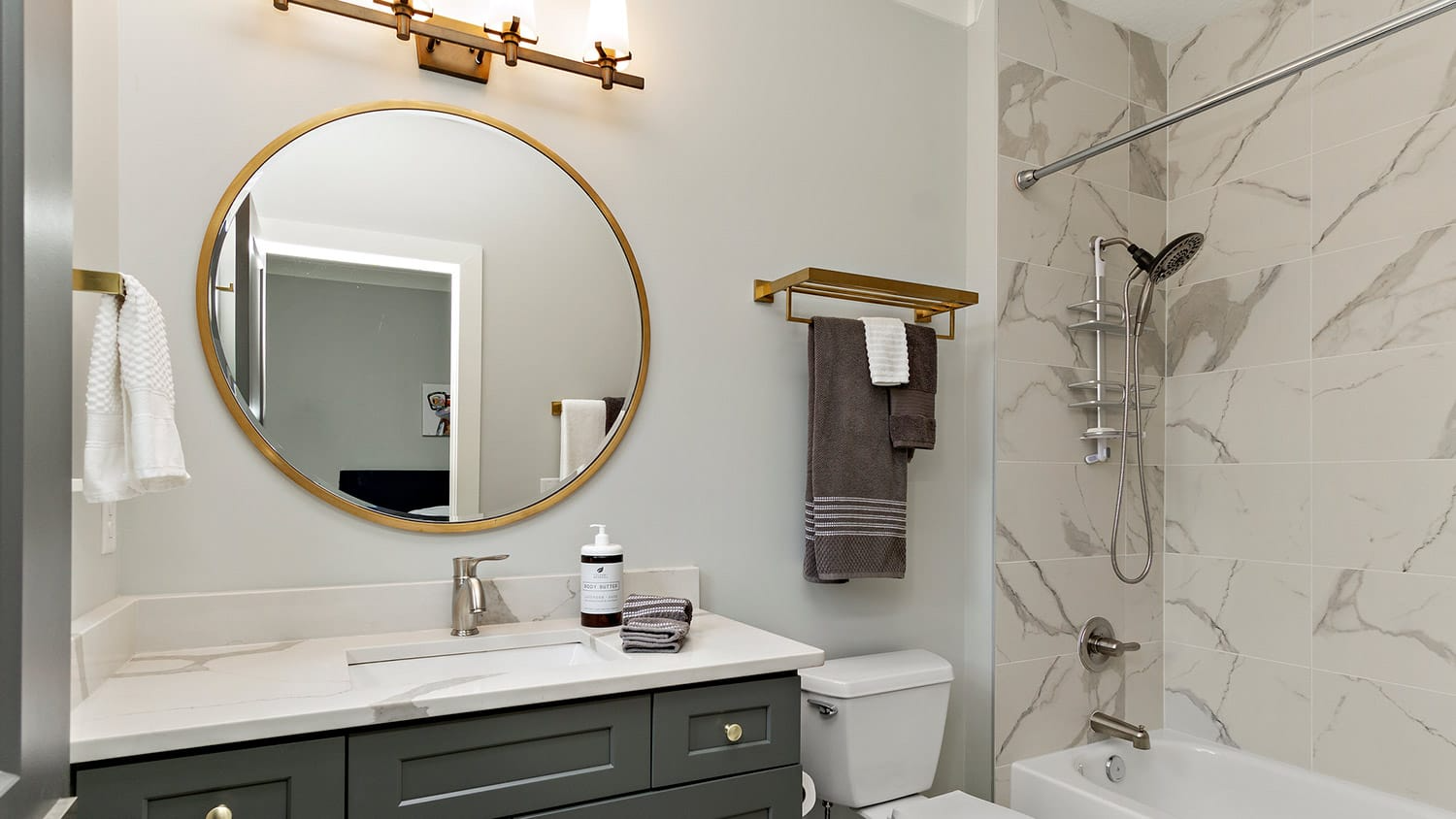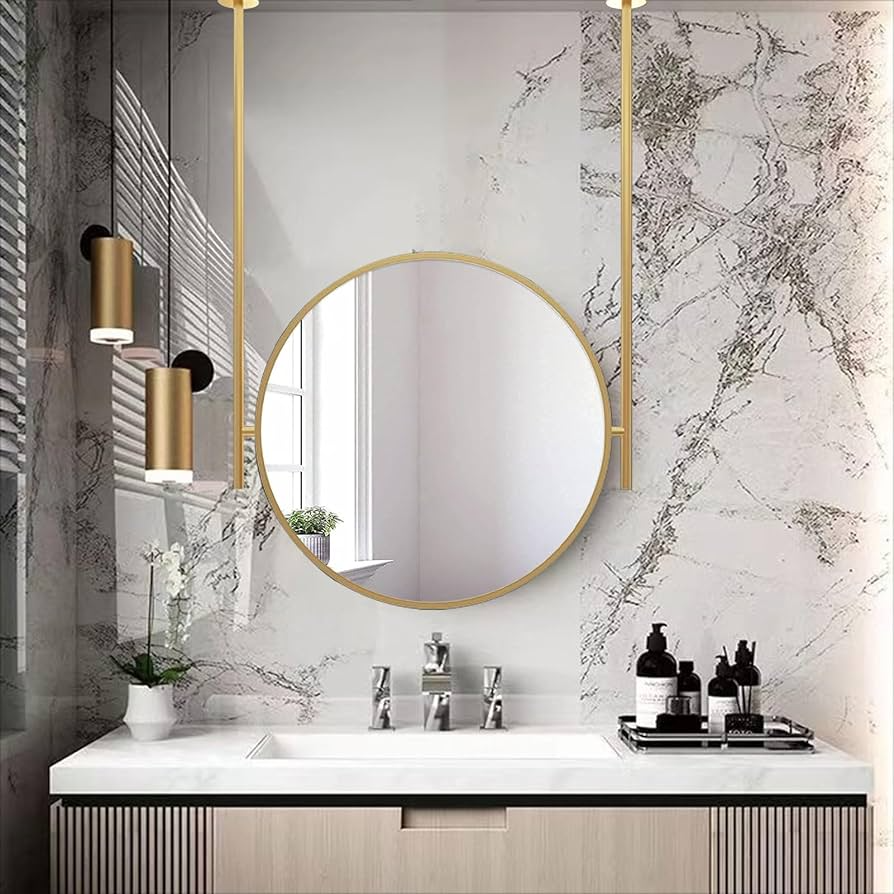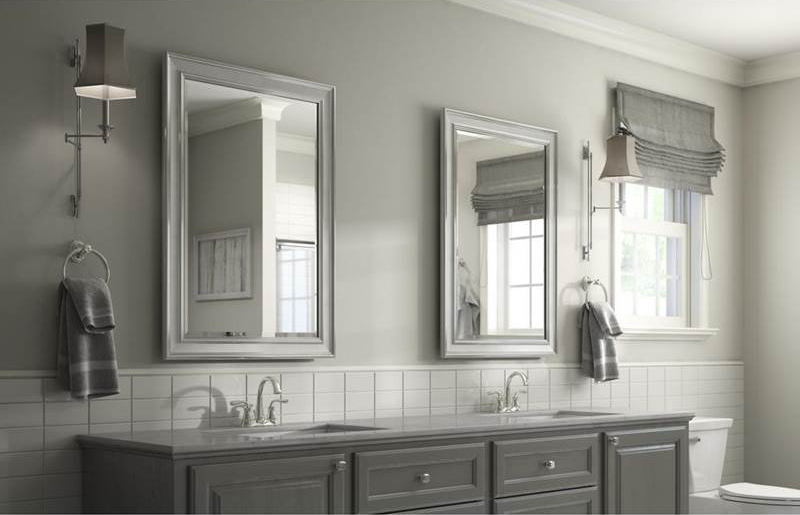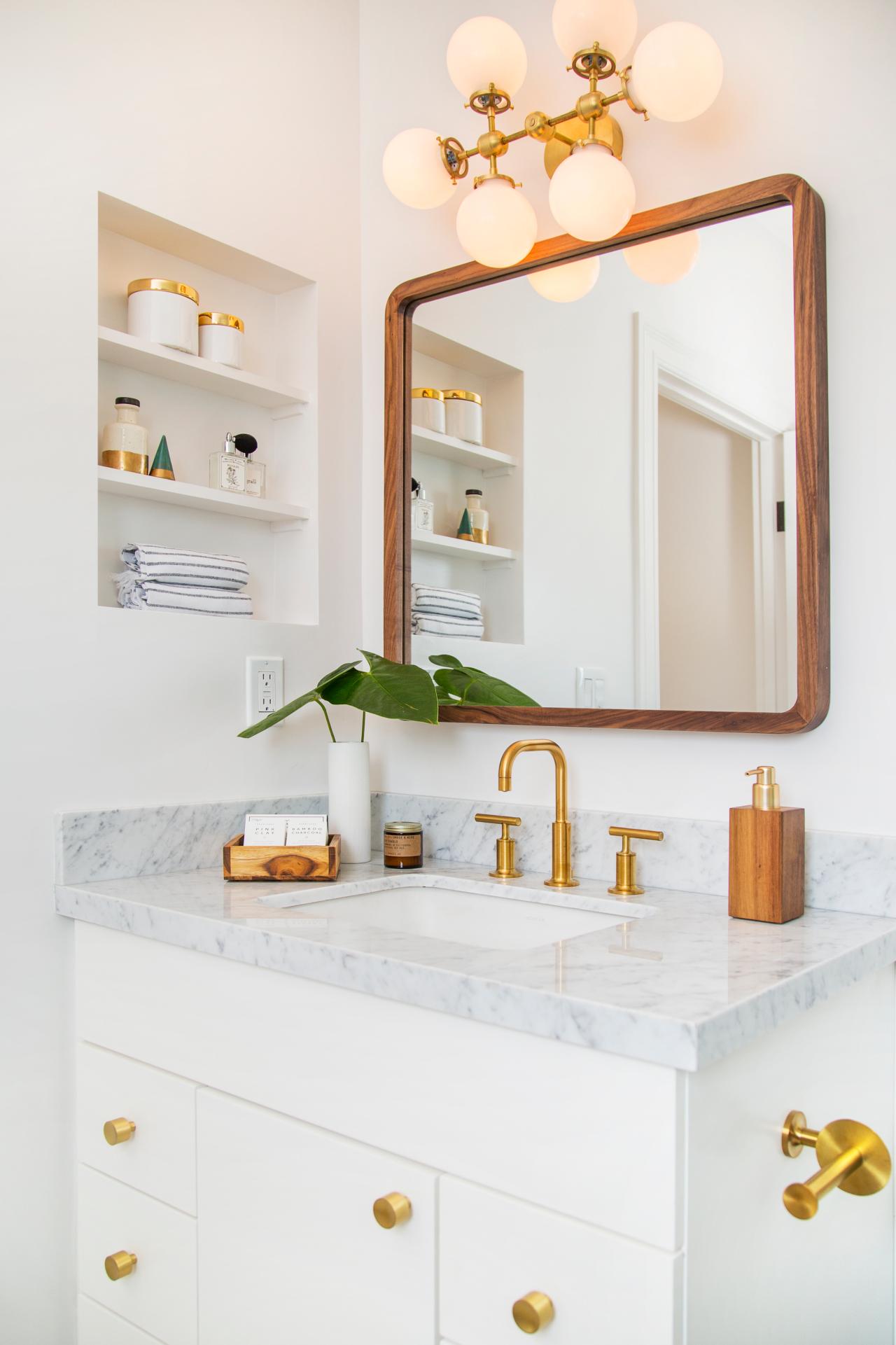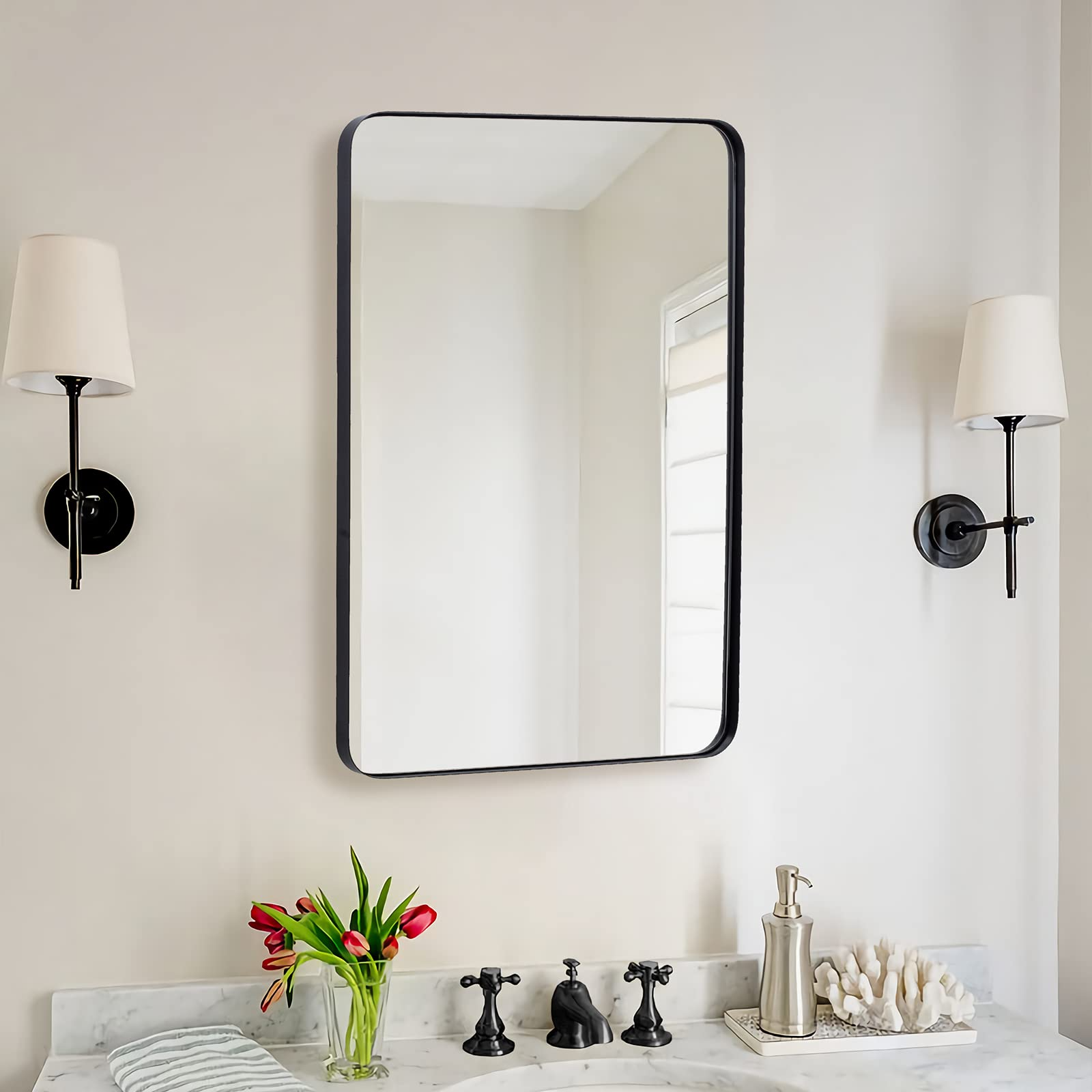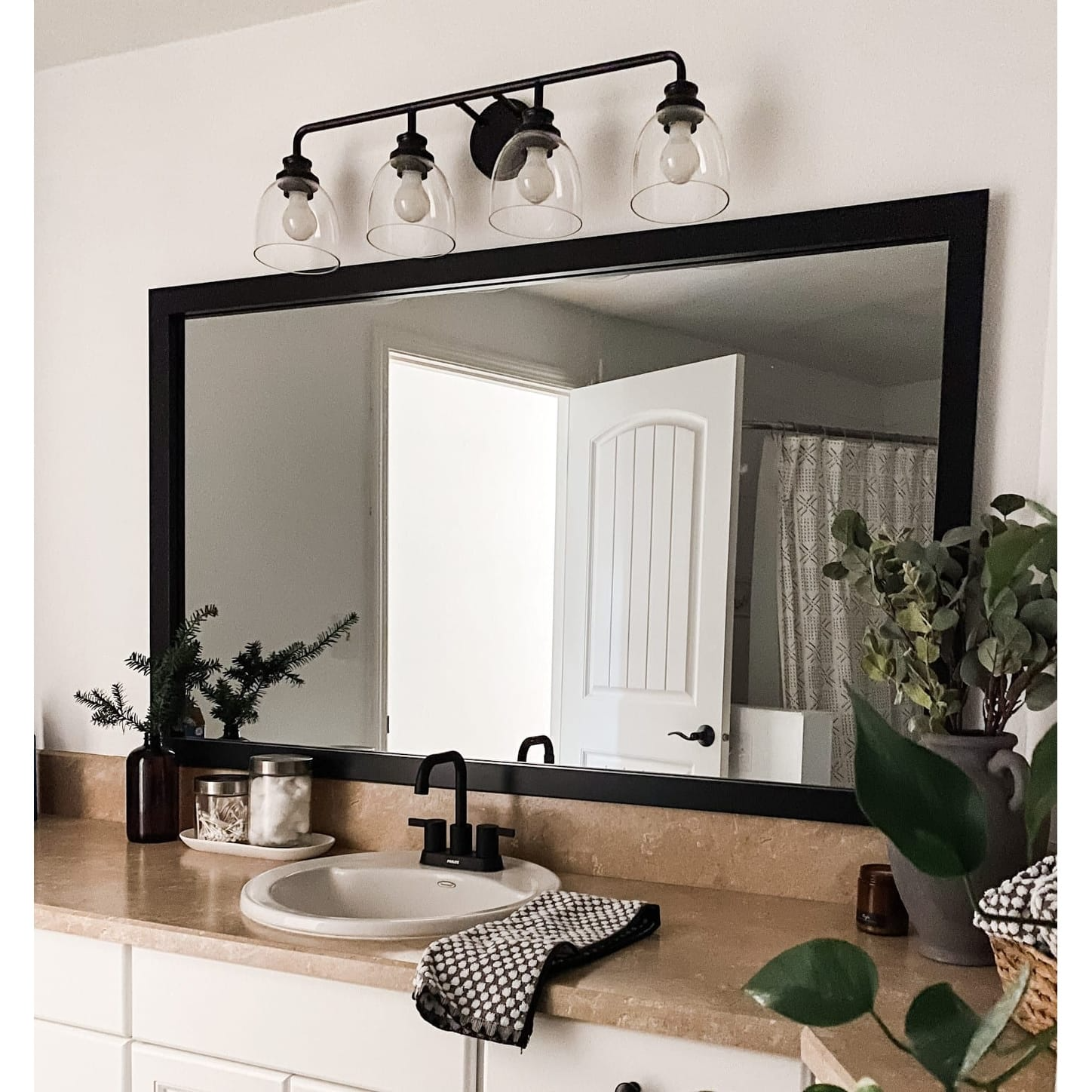Introduction:
The bathroom mirror is more than just a functional tool for grooming; it’s an essential design element that has the power to transform the space. It can make a small room appear larger, enhance natural light, or add a touch of opulence to your daily routine. This comprehensive guide delves into the world of bathroom mirrors, exploring their various styles, functionalities, installation techniques, and how they can elevate the overall aesthetic and practicality of your bathroom.
1. Mirror Styles: Reflecting the Ideal Bathroom Aesthetic
The choice of mirror style is pivotal in crafting the perfect ambiance for your bathroom space. It can evoke a sense of calmness, luxury, or innovation, depending on your personal taste and desired atmosphere.
Traditional & Ornate:
These mirrors often feature intricate frames with carved details, gilding, or distressed finishes that resonate with historical styles such as Victorian or Baroque. They lend an air of classic elegance and can be a striking focal point in a traditional or vintage-inspired bathroom.
Contemporary & Minimalist:
Frameless mirrors are synonymous with modern design, reflecting simplicity and sophistication. Their clean lines create an uncluttered look, allowing other design elements to shine while maximizing available light and creating an illusion of more space.
Industrial & Rustic:
Mirrors with raw metal frames, exposed hardware, or reclaimed wood accents capture the essence of industrial or rustic decor. They add character and warmth, blending well with brick walls, concrete surfaces, or wooden vanities.
Geometric Shapes & Artistic Frames:
From hexagonal to round, oval, or asymmetrical designs, unconventional shapes break away from the norm and introduce visual interest. Artistic frames, perhaps made of unconventional materials like seashells or mosaic tiles, can turn the mirror into a unique piece of art.
Customized Solutions:
For those seeking a truly personalized touch, custom-designed mirrors can incorporate etchings, backlighting, or even embedded artwork, perfectly tailored to match the specific aesthetic of your bathroom.
Each mirror style contributes uniquely to the overall mood and feel of the room. By carefully selecting the right mirror to reflect your individuality and lifestyle, you can transform your bathroom into a serene oasis or a bold expression of contemporary living.
2. Enhancing Practicality: How Functional Features Boost Your Mirror’s Utility
While aesthetic appeal is crucial, mirrors in the bathroom can also be enhanced with functional features that improve daily use and convenience. Here are some ways to integrate practicality into your mirror selection:
Medicine Cabinets:
Mirrors doubling as medicine cabinets provide storage for toiletries, medications, and other essentials, thereby optimizing space in smaller bathrooms. Some designs come with adjustable shelves or even electrical outlets for toothbrush chargers and shavers.
Lighting Integration:
Illuminated mirrors, often featuring LED lighting, provide bright, even light for tasks like makeup application or shaving. Some models offer dimming options to create a relaxing ambiance during baths or to cater to different lighting needs throughout the day.
Defogging Systems:
Heated or electric defoggers embedded within the mirror ensure a clear reflection regardless of steam from hot showers, saving time and frustration.
Magnification Options:
Built-in magnifying sections are a boon for those who require precision grooming, such as applying contact lenses or doing intricate makeup work.
Motion Sensors:
Hands-free activation via motion sensors makes using the mirror more hygienic and convenient, especially in high-traffic areas or when hands are wet or soapy.
Size and Placement:
Strategic placement and sizing can enhance functionality. Full-length mirrors are ideal for checking outfits, while strategically placed vanity mirrors can help distribute light effectively and make small spaces appear larger.
3. Placement Strategies for Optimal Reflections
The placement of a bathroom mirror is as crucial as its style. Strategic positioning can significantly impact the perception of space and light within the room:
Over Vanity:
A standard approach is placing a large mirror directly above the sink vanity, extending from wall-to-wall if possible, to maximize available light and visually expand the area.
Multiple Mirrors:
Layering several mirrors in different sizes or shapes can break up monotony and create interesting reflections and patterns of light.
Full-Length Mirrors:
Placed strategically on a wall or closet door, full-length mirrors not only provide a complete view for dressing but also contribute to the illusion of a larger space.
4. Installation Techniques and Considerations
Proper installation ensures both safety and longevity of your bathroom mirror. Key considerations include:
Secure Mounting:
Use appropriate hardware designed specifically for heavy mirrors to prevent accidents due to weight and moisture exposure.
Safety Film:
Applying a safety film can prevent glass shards in case of accidental breakage, a critical safety feature for family homes.
Electrical Requirements:
If you opt for a mirror with built-in lighting or defogging capabilities, consult with a professional electrician to ensure safe wiring and compliance with local regulations.
5. Ensuring Longevity: Essential Maintenance and Care for Your Bathroom Mirrors
Maintaining your bathroom mirror’s appearance and functionality is key to preserving its longevity and keeping it looking as pristine as the day you installed it. Here are some tips for effective maintenance and care:
Cleaning:
Regular cleaning with a soft, lint-free cloth or microfiber towel and a mild glass cleaner will prevent the build-up of soap scum, water spots, and dirt. Avoid using abrasive cleaners or materials that can scratch the surface.
Water Stains Removal:
For stubborn water stains, mix equal parts white vinegar and water, apply to the mirror with a spray bottle, let it sit for a few minutes, then wipe clean with a damp cloth followed by a dry one.
Frame Care:
If your mirror has a frame, clean it according to the material type. Wooden frames may need to be polished or treated with furniture oil periodically, while metal frames can be wiped down with a gentle cleaner and dried to avoid rust or corrosion.
Moisture Control:
To reduce fogging, consider installing a ventilation fan or defogger. After showers, leave the door open or run the fan to allow air circulation and moisture reduction.
Protection from Hard Water:
Applying a coat of car wax on the mirror’s surface can help repel hard water deposits and make future cleaning easier.
Handle with Care:
When wiping or cleaning around the edges, be gentle to avoid accidental breakage. In case of chips or cracks, have them repaired immediately to prevent further damage.
Storage Solutions:
If you have mirrors that double as medicine cabinets, ensure items stored inside are not overly heavy or sharp-edged which could cause stress or damage to the mirror over time.
By following these care guidelines, you can keep your bathroom mirrors in excellent condition and enjoy their reflective beauty and practicality for years to come.
Conclusion:
In the realm of bathroom design, mirrors hold a unique position that combines form and function. By understanding the myriad of styles, features, and installation requirements, you can choose a mirror that not only complements your bathroom’s aesthetic but also serves as a practical and enjoyable component of your daily routine. Embrace the art of reflection and watch your bathroom shine in ways you never imagined.
